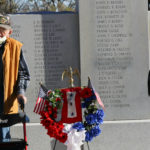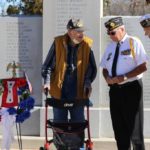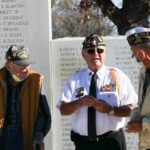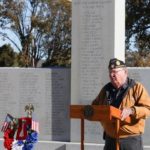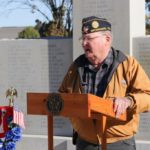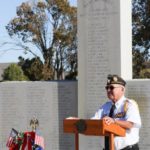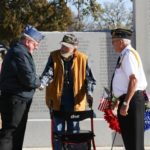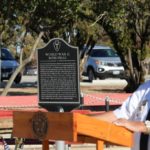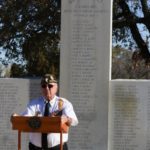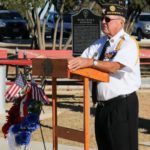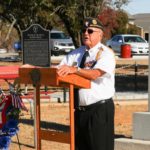‘A date which will live in infamy,’ in the words of President Franklin D. Roosevelt, occurred 79 years ago this day as Japan attacked Pearl Harbor in Hawaii, which resulted in 2,335 military lives lost and resulted in the United States joining World War II.
A remembrance ceremony regarding that moment in history took place Monday morning at the Central Texas Veterans Memorial.
Retired Army Col. Tom Gray, president of American Legion Post 196, addressed those in attendance and spoke of the importance of Dec. 7, 1941 in United States history.
“It’s important that in this community we continue to recognize days like this and the sacrifices that our service men and women have contributed to this country so that our younger kids will never forget how they got their freedom,” Gray said. “The freedom to do things they want to today is because of the sacrifices that were made to give them that freedom.”
Gray also shared the history leading up to Japan’s attack on Pearl Harbor.
In the 1930s, the Japanese wanted to be a world power but they didn’t have the resources to carry that desire out. Throughout the 1930s the relations between Japans and the United States began to deteriorate. Japan decided they were going to complete their plan, which included taking land all the way to Australia, and the only country that could stop them was the United States.
Japan devised a plan to attack the American Pacific fleet at Pearl Harbor, which would render the U.S. incapable of stopping their land expansion. The Japanese military developed a plan two years out.
The Japanese fleet consisted of six aircraft carriers, two battleships, three cruisers and 11 destroyers. Those six carries had 420 aircraft on them. The fleet was successful in evading any kind of early notification that they were close to Hawaii until they launched their planes. The attack came in two different waves and lasted two hours.
In that two-hour span, the Japanese destroyed or significantly damaged 20 of the U.S. warships in Pearl Harbor. Of those 20, eight were battleships and only two of those eight battleships were able to be restored and put back into service. A total of 180 war planes were destroyed as well.
A total of 2,008 from the Navy, 218 from the Army and 109 Marines lost their lives that day, as well as 68 civilians. An additional 1,178 people were wounded.
Three aircraft carriers, the Yorktown, the Enterprise, and the Saratoga, were at sea during the attack. Six months later in the Battle of Midway, those three carriers were able to destroy the fleet the Japanese used at Pearl Harbor.
On Dec. 8, 1941, in a joint session of Congress with President Roosevelt presiding, the United States declared war on Japan, which brought the country into World War II due to Japan’s alliance with Germany and Italy.
Gray mentioned the part of Roosevelt’s ‘day of infamy’ speech that affected him the most.
“To me this is the American spirit that we all have and fought with whether it was World War II, Korea, Vietnam, Afghanistan,” Gray said. “President Roosevelt said, ‘No matter how long it may take us to overcome the premeditated invasion, the American people in their righteous might, will win through to absolute victory.’ And we did. It took until 1945 to get the Japanese to sign an unconditional surrender after we dropped two atomic bombs on Hiroshima and Nagasaki.’”
Dr. Jim Hays, a retired Texas National Guard colonel, spoke of early memories in his life which led to his decision to later serve his country in the military.
“My mother drove me by a house in Ballinger and there was two flags in the window of their house,” Hays said. “One had three gold stars, she had lost three sons on the USS Arizona. At a young age that made an impression on me.”
Hays also spoke of his uncle’s service during World War II.
“My uncle’s first job in the Navy was to help rebuild the hospital at Hickam Field and build a new hospital at Pearl Harbor,” Hays said. “Then he went to Guam and made beachhead and came home at 48 years old with a heart attack.”
World War II veteran Gussie Seiler, who in November was presented with a World War II participation medal at the Veterans Day ceremony, was on hand Monday and helped place a wreath in front of the World War II memorial.
Seiler was born in 1926 in Weisert, Texas and enlisted in the Navy at age 17 in Yorktown, Texas. Seilier was sent to Guam where he served on a rescue team for the aircraft running bombing raids over Japan.
